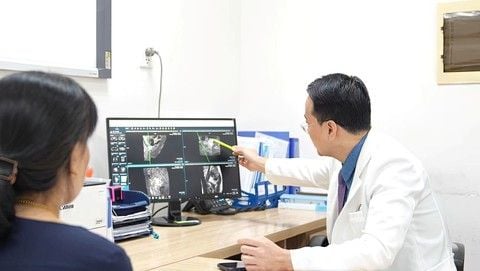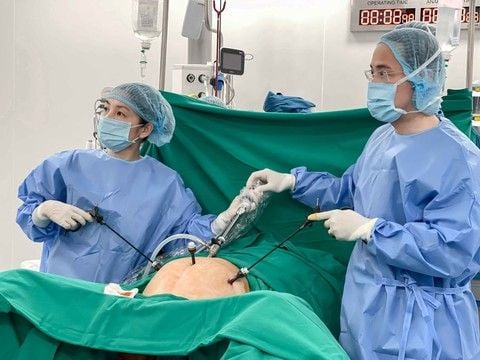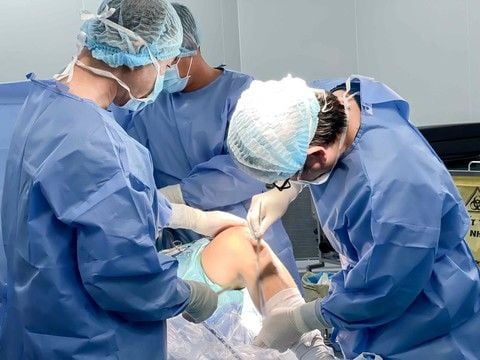The article was professionally consulted by Nguyen Anh Tu MD - Obstetric Ultrasound Specialist - Prenatal Diagnosis - Department of Obstetrics - Vinmec Hai Phong International General Hospital.
The older the gestational age, the higher the maturity of the placenta, but the manifestations are different in each person whose placental calcification process occurs quickly or slowly.
1. Placental calcification phenomenon
Placental calcification phenomenon is the deposition of calcium between the placenta and the uterine muscle, appearing in nearly full-term fetuses. Through the degree of placental calcification, the doctor can also assess the maturity of the fetus.
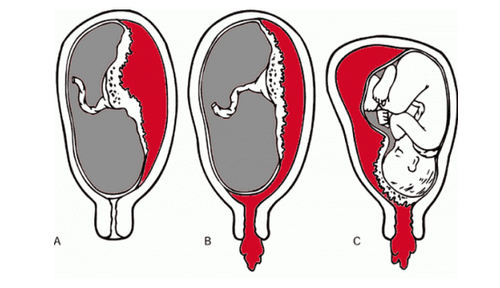
2. Placenta calcification level
Placenta calcification level is divided into three levels, the highest maturity of the placenta is level 3. The older the gestational age, the higher the maturity of the placenta, but the manifestation is different in each person whose calcification process occurs quickly or slowly. The older the gestational age, the more calcifications.
On ultrasound, the placenta will be assessed for calcification level with the following:
- Grade 0: gestational age of about 31 ± 1 week;
- Grade 1: gestational age of 34 ± 3.2 weeks;
- Grade 2: gestational age of 37.6 ± 2.7 weeks;
- Grade 3: gestational age of 38.4 ± 2.2 weeks;
When the placenta is calcified at grade 3, it shows that the fetal lung function has begun to complete, the baby can gradually adapt and can completely survive the outside environment.
The older the gestational age, the higher the maturity of the placenta, but the manifestations are different in each person whose calcification process of the placenta occurs quickly or slowly.
3. When is placental calcification dangerous?
Most pregnant women, when reading the ultrasound results and seeing that they have placental calcification, are very worried, afraid that the placenta will calcify quickly, and the nutrition through the placenta to the fetus will be slower. However, most placental calcification is not worrisome. This only indicates the maturity of the fetus, not that the placenta is degenerative.
But in some cases, the accumulation of placental calcification can cause the following effects:
- Accumulation of calcium in any area will cause fibrosis of the placenta and blockage of some blood vessels.
- If grade 3 placental calcification occurs from the early weeks of pregnancy, the transfer of nutrients from mother to child will be poor, the fetus in the womb will absorb less nutrients, leading to fetal malnutrition.
- Post-term pregnancies with heavily calcified placentas are at higher risk of fetal distress due to severe hypoxia. These pregnancies also have a mortality rate three times higher than other pregnancies.
- If it lasts until week 42, placental calcification will occur even faster. The blood concentration in the placenta will decrease, making oxygen exchange difficult. This condition, if prolonged, can lead to fetal distress, fetal death during labor or death just a few hours after birth, or affect the child's development due to lack of oxygen to the brain.
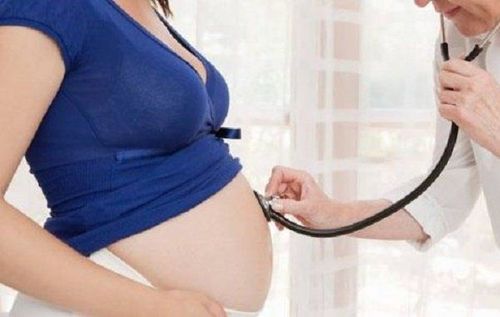
For all pregnant women, regardless of whether they are diagnosed with placental calcification or not, they need to go for a check-up as prescribed and scheduled by doctors.
Therefore, for all pregnant women, regardless of whether they are diagnosed with placental calcification or not, they need to go for a check-up as prescribed and scheduled by doctors. When the fetus is full-term (through ultrasound assessment of amniotic fluid volume, placental calcification, etc.) but the pregnant woman still shows no signs of labor, the doctor will have timely intervention instructions for the best health of the mother and baby.
In the last months of pregnancy, women not only face the risk of oligohydramnios, polyhydramnios, and placental calcification, but also many other health problems. In order for the birth to go smoothly, in the last 3 months of pregnancy, the health of both mother and baby needs to be closely monitored and checked. Pregnant women need to recognize the signs of labor, distinguish physiological contractions to go to the hospital early for timely delivery.
To protect the health of mother and baby comprehensively as well as help mothers feel more secure during labor, Vinmec provides a comprehensive maternity service, helping doctors monitor the health of mother and baby from the beginning of pregnancy, detect early and intervene promptly on health problems. In particular, with the strength of being able to diagnose and detect fetal abnormalities early, Vinmec has helped many couples give birth safely and healthily. Mothers and babies will be skin-to-skin, screened, and given comprehensive postnatal health care before going home.
Dr. Nguyen Anh Tu has 6 years of experience in obstetrics and gynecology ultrasound, especially in research and specialized training in fetal ultrasound - prenatal diagnosis. Dr. Tu has completed courses on fetal ultrasound - prenatal diagnosis of the International Fetal Medicine Federation FMF; trained in consulting and performing diagnostic intervention techniques in fetal medicine and participated in many conferences and seminars specializing in fetal medicine. He is currently a doctor at the Department of Obstetrics and Gynecology, Vinmec Hai Phong International General Hospital.
To arrange an appointment, please call HOTLINE or make your reservation directly HERE. You may also download the MyVinmec app to schedule appointments faster and manage your reservations more conveniently.
To arrange an appointment, please call HOTLINE or make your reservation directly HERE. You may also download the MyVinmec app to schedule appointments faster and manage your reservations more conveniently.







